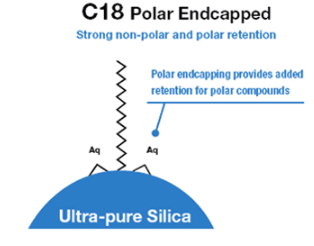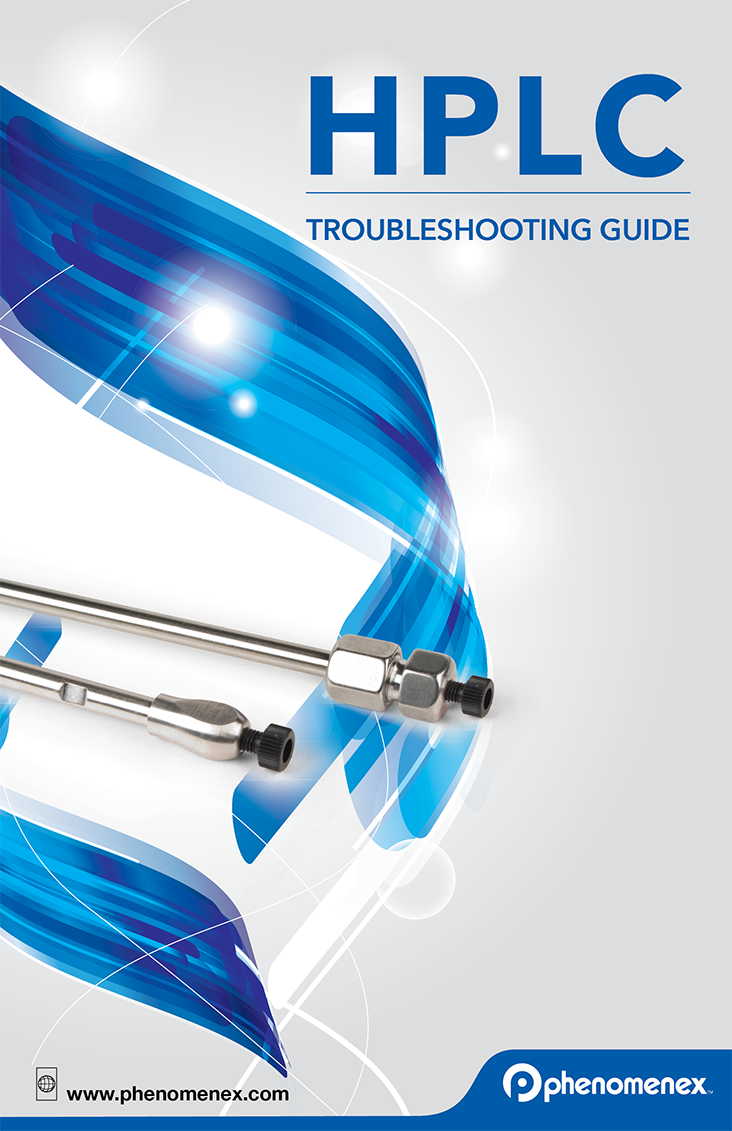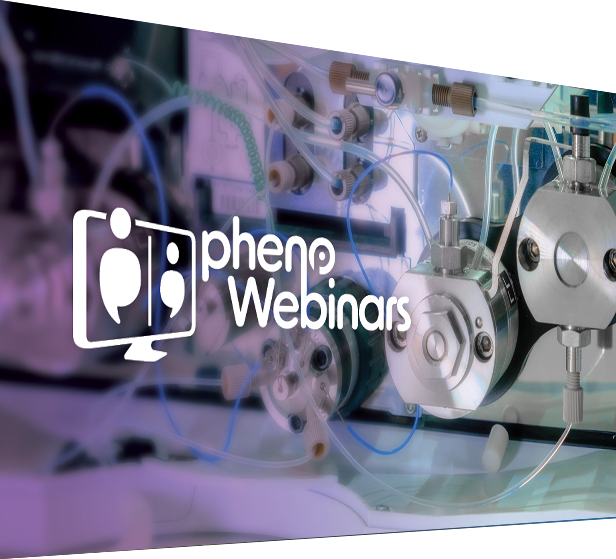HPLC/UHPLC Technical Tip
Level: Basic
The Role of End-Capping in RP
Silica used to pack HPLC columns is a polymer of silicon and oxygen with Si-OH groups (silanols) at the surface. To these silanols, functional groups are bonded using a silane reagent to functionalize the base media.
When HPLC columns are functionalized, it is impossible to ensure 100% phase coverage and react all available silanol groups (free hydroxyls on the surface of the silica) with the bonded phase. Sterically, as you begin to bond a phase you increase the hindrance to bonding making subsequent bonding stages more difficult than the previous ones.
Without end-capping, a column would be left with significant numbers of accessible, highly active residual silanols which have the potential to alter the selectivity of the stationary phase. These residual groups have the potential to form strong ionic and polar interactions (often called “secondary interactions”) with polar and basic groups on the compounds introduced to them. So, reducing the number of free silanols after bonding the stationary phase through end-capping is imperative.
Historically, end-capping was done with a small hydrophobic group, similar in nature to a trimethyl silane. In recent years several manufacturers have also introduced other groups to add a different selectivity element to the column.

TMS end-capping
If the reagent used for end-capping contains charged functionality, for example, this will impart ion exchange functionality to the surface and give the column ion exchange properties together with the reversed phase interactions from the C18 ligands. Likewise, a polar moiety will give polar characteristics to the surface.
Now that we have understood the role of end-capping, let’s review the main benefits of silica end-capping depending on the chemical groups used.

| Stationary phase type | End-capping | Benefits |
|---|---|---|
| C18 | Trimethylsilyl group | |
| PS-C18 | Positively charged group and trimethylsilyl group | |
| Polar C18 | Polar group and trimethylsilyl group | |
| XB-C18 | Di-isobutyl side chains and trimethylsilyl group |
In summary, new end-capping technologies can significantly improve the analysis of compounds that were once considered challenging. For example, nowadays, great peak shape and shorter run times can be achieved for the analysis of basic drugs using PS-C18 columns. The Polar C18 chemistry has been proven to best retain compounds such as metabolites, and XB-C18 chemistry has shown excellent chromatography for peptide analysis, with enhanced retention of small polar peptides.
Troubleshooting LC
• Problems with your chromatogram and Injector
• Key problem areas and preventative maintenance
• Leaks and Abnormal Pressure

Free On-Demand Chromatography Webinars
• Fundamentals of LC
• LC Troubleshooting
• LC System Optimization



